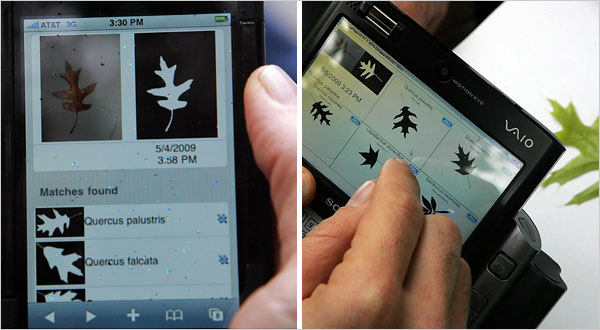 {Image via NYT. A prototype for an iPhone program, left, matches a picture of an oak leaf to a database. The prototype has been tested at Central Park in New York. Software to identify leaves by searching a field guide on a PC or a phone could be useful not only to hikers but also to scientists compiling data.}
{Image via NYT. A prototype for an iPhone program, left, matches a picture of an oak leaf to a database. The prototype has been tested at Central Park in New York. Software to identify leaves by searching a field guide on a PC or a phone could be useful not only to hikers but also to scientists compiling data.}
It is important for a Landscape Architect to understand a wide variety about plants. It is one of the many mediums used and the greater we can anticipate how a certain organism will react in a given environment, the more effective our selections will be.
We are however not horticulturists, and the demand for us to be familiar with several disciplines limits the depth of how much we can know about each one.
Technology is coming to our aide. And if we're criticized again by the likes of Will Alsop for not being able to identify a tree in the field, we'll simply respond, we don't have to!
A new application being developed by a team of researchers funded by the National Science Foundation gathers info from a database of thousands of images to enable you to properly identify a tree or shrub by using a photo taken from a mobile device.
As an intern or young employee, out in the field with the chore of identifying acres of existing plant life, this can be a daunting chore, especially if your plant i.d. isn't up to par. Rather then returning to the office with hundreds of branches that you weren't quite sure of, take your iphone and handle it all in the field.
What would be the really interesting next step for this technology is to incorporate geospatial mapping to the photographed tree identity. Once the tree is properly identified and tagged, it is recorded and color-coded onto a site plan, saving yet another step of compiling all of this field work into a accurate existing plant material plan. Perhaps even further down the road, certain infrared photo technologies will exist within smartphones that will also record and map plant health and existing ecology factors that might influence site planning matters.
